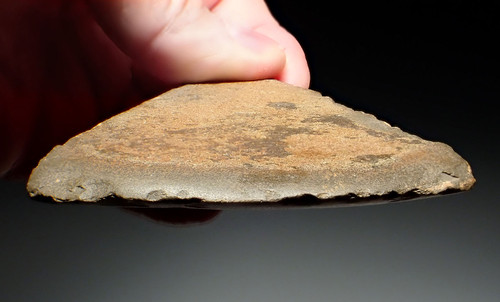Product Description
SEE MORE AFRICAN NEOLITHIC ARTIFACTS
We have been obsessively collecting the finest African Neolithic artifacts for over 20 years and this specimen comes from our private collection that we are now offering for sale. Over the past two and a half decades, we have purchased amazing private collections in America and Europe. In all this time, we would set aside the RAREST OF THE RAREST objects of African Neolithic cultures, and it is now time for us to sell some from this collection of ultra-rare objects. The collection is small and limited, and once sold, would be impossible to recreate due to changed legislation and site depletion. Each specimen represents the highest grade of its kind that we have ever seen. This is one of those precious specimens from those efforts. The sites where these artifacts were once found, have been entirely picked clean for years, not to mention are now protected from any further exploration.
This is a MASSIVE West African Neolithic Sahel ground and grooved stone war axe. This axe head alone, weighs 3 lbs (1.4 kg). It enormous proportions would have made it an intimidating shock weapon, able to end the life of an enemy warrior with a single blow to the head. The ground sharp edge and narrow hammer butt end would have made this a deadly effective weapon by striking the body from either end. It was ground and polished out of a very dense and heavy hardstone, and is in perfect AS MADE form. The entire surface has developed a layer of white mineral encrustation and heavy deposits of iron from the soil. Considerable efforts went into the shaping and crafting of this spectacular stone weapon. The form is extremely aesthetic with tapering and flaring of various regions of this unique axe design. When hafted to a large wooden shaft handle, it would have taken two hands to wield such an impressive and powerful weapon. Scientific documentation exists for the evidence of widespread warfare and violence among individuals of Stone Age and Neolithic Africa. One interesting article can be found here.
Amazingly, this large specimen has survived intact and unbroken with no modern damage and a remarkably perfectly preserved cutting edge. In all the decades we have been collecting and traveling, we have never seen an African Neolithic object of this nature or kind. It could have been a FUNCTIONAL ceremonial weapon, or owned by a noble warrior of status or ruling class. It is safe to say it truly is a once-in-a-lifetime acquisition! The original mineral deposits and patina are intact and deep in all micro-crevices - traits ONLY found in AUTHENTIC specimens.
HISTORY
The Neolithic in West Africa, when people increasingly produced their own food instead of hunting, fishing or collecting it as before, developed during a humid phase around 5000 BC. The invention of ceramics which was long thought to emerge in the earliest Neolithic, appeared at the central Malian site of Ounjougou dating to about 9,400 BC, and is believed to be an instance of the independent invention of pottery. The earliest Neolithic is attributed to the phase of self-production of food, although no plants were cultivated and no cattle were kept.
The middle Neolithic is marked by first traces of nomadic cattle breeders (again) around 4000 BC. Around 3500 BC, the relatively humid climate came to an end. A thousand years later, the dry phase, which apparently drove cattle nomads from the east to Mali, reached its peak. The northern lakes dried up and the population mostly moved south.
The late Neolithic was marked by renewed immigration from the Sahara around 2500 BC which had grown into an enormously spacious desert.
Approximated to the Neolithic, there were Negroid skeletal remains found in West Africa. At El Guettara, Mali, there were two individuals found. At Karkarichinkat South, Mali, a skull was found. At Ibalaghen, Mali, there was a cranium found. At Tin Lalou, Mali, there was a cranium and mandible found. At Tamaya Mellet, Niger, there were 12 individuals found. All of these remains have been specifically dated between 5000 BC and 2000 BC.
 US DOLLAR
US DOLLAR
 EURO
EURO
 AUSTRALIAN DOLLAR
AUSTRALIAN DOLLAR
 CANADIAN DOLLAR
CANADIAN DOLLAR
 POUND STERLING
POUND STERLING






























